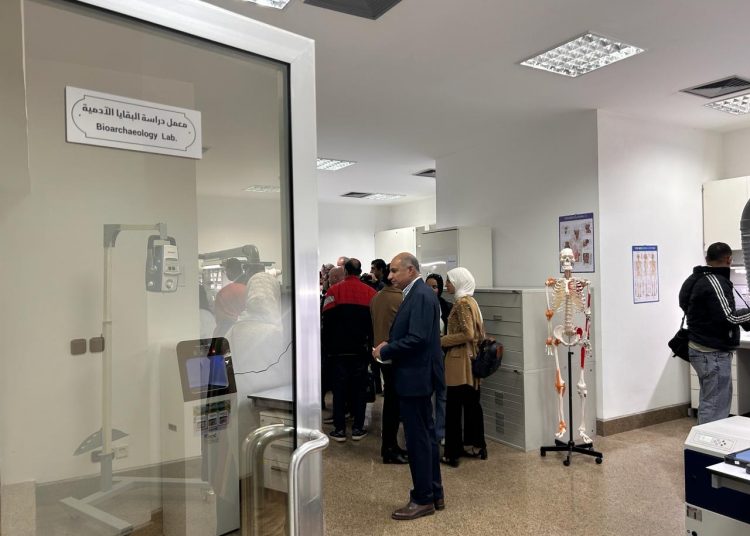The National Museum of Egyptian Civilisation (NMEC) in southern Cairo opened Thursday morning 13 of its 15 scientific research laboratories to the public, for the first time.
Minister of Tourism and Antiquities, Ahmed Issa, said the new move shows that the NMEC is not just a museum that displays artefacts.
“The museum is also a cultural and a scientific hub,” the minister said.
He expected the newly-opened laboratories will contribute to the development of scientific research, not only in archaeology, but also in other related fields.
The opening of the labs, the minister said, befits this year’s theme of the International Council of Museums, namely ‘Museums for Education and Research’.
The new labs include the Ancient DNA Lab, the first in Africa to be dedicated to the study of ancient human, animal, and plant DNA.
This lab pioneers advanced extraction and analysis methods for routine use. Research conducted inside the lab includes human kinship and ancient Egyptian environmental diseases, facilitated by specialised DNA analysis equipment.
The new labs also include the Bioinformatics Unit which analyses genomic data and exploits molecular results. This unit identifies unknown mummies, their familial relationships, and infectious and heritable diseases, using highly computationally powerful software programmes.
It serves as a nucleus for a core data analysis centre that supports scientific research laboratories in NMEC.
There is also the Archaeobotany Lab which is dedicated to studying archaeological plants from excavations. It identifies plant varieties and reconstructs past plant environments.
The Mobile Lab conducts on-site analyses and includes element detection, art origin dating, soil and dye analysis, heavy metal proportions, and industrial product testing.
There is also a Thermal Analysis Lab that focuses on measuring sample weight and thermal properties. Such measurements are essential for pharmaceutical and material studies.
The newly opened labs also include the Bioarchaeology Lab which focuses on human remains, employing physical anthropology to understand past life, disease spread, and health. It utilises non-destructive methods,such as radiography, biometrics, biochemical analyses, and microscopic analyses.
They also include the Anoxia Unit which specialises in artefact sterilisation via nitrogen gas. This lab effectively controls insects without damaging artefacts.
The X-Ray Lab utilises X-ray imaging to study mummified remains, authenticate artworks, and identify solid objects inside the body.
This device can also be used to differentiate between real and fake paintings.
NMEC CEO, Ahmed Ghoneim, said the new laboratories would contribute significantly to advancing understanding of ancient Egypt and its rich heritage.
“The work of the new labs combines cutting-edge technology with historical context to shed light on the past,” he said.
The NMEC is the first museum in the Arab region to be dedicated to the earliest civilisation in history: the ancient Egyptian civilisation.






Discussion about this post